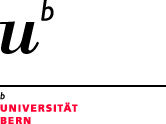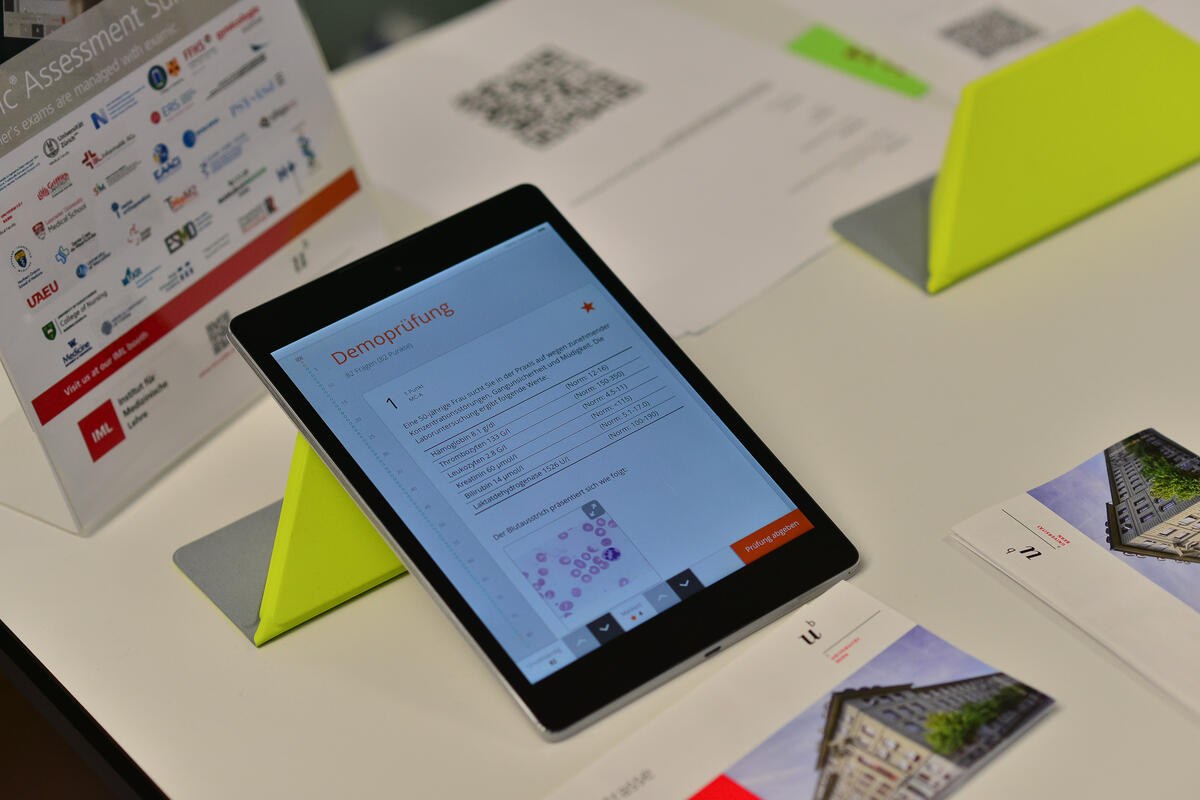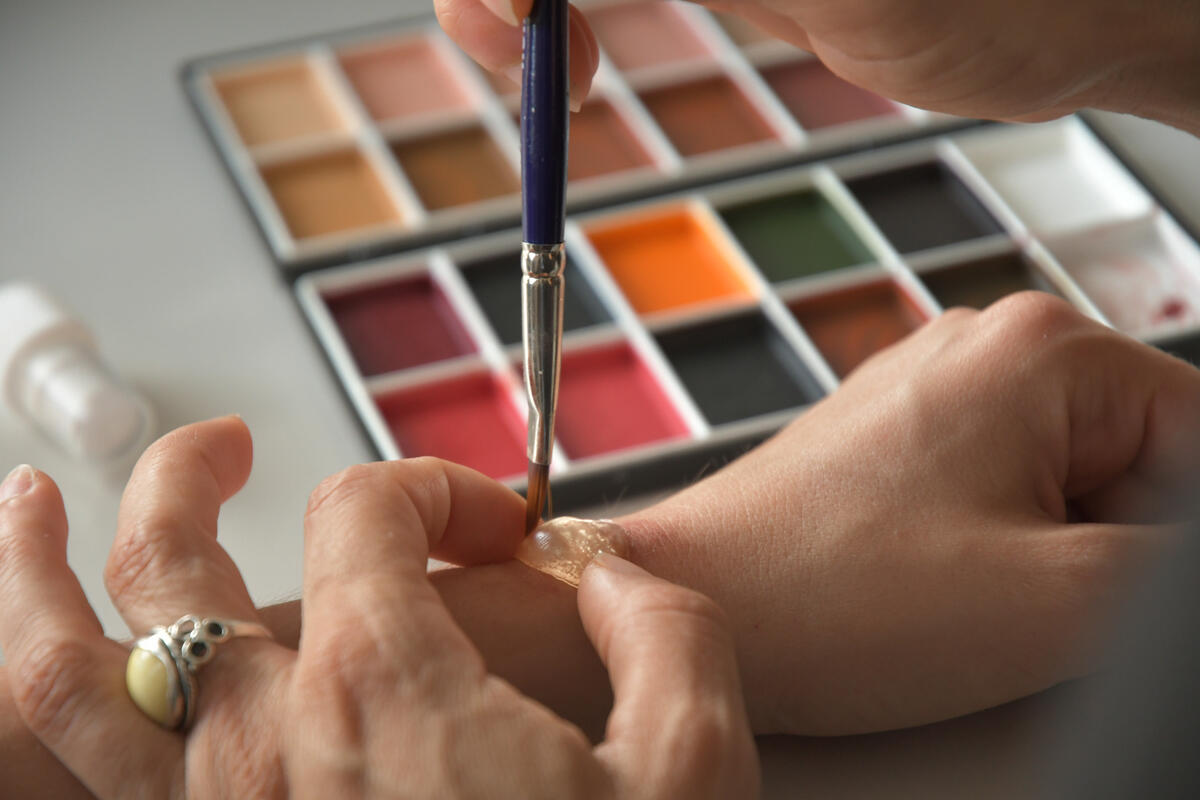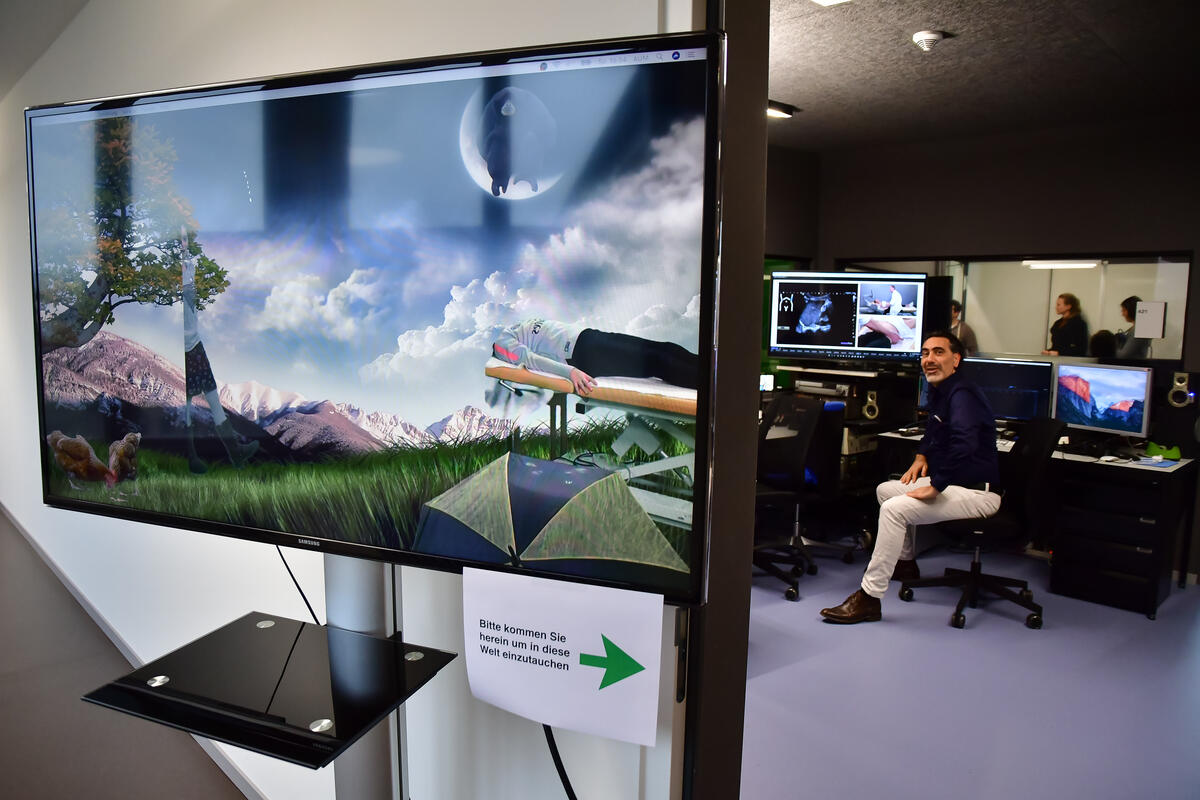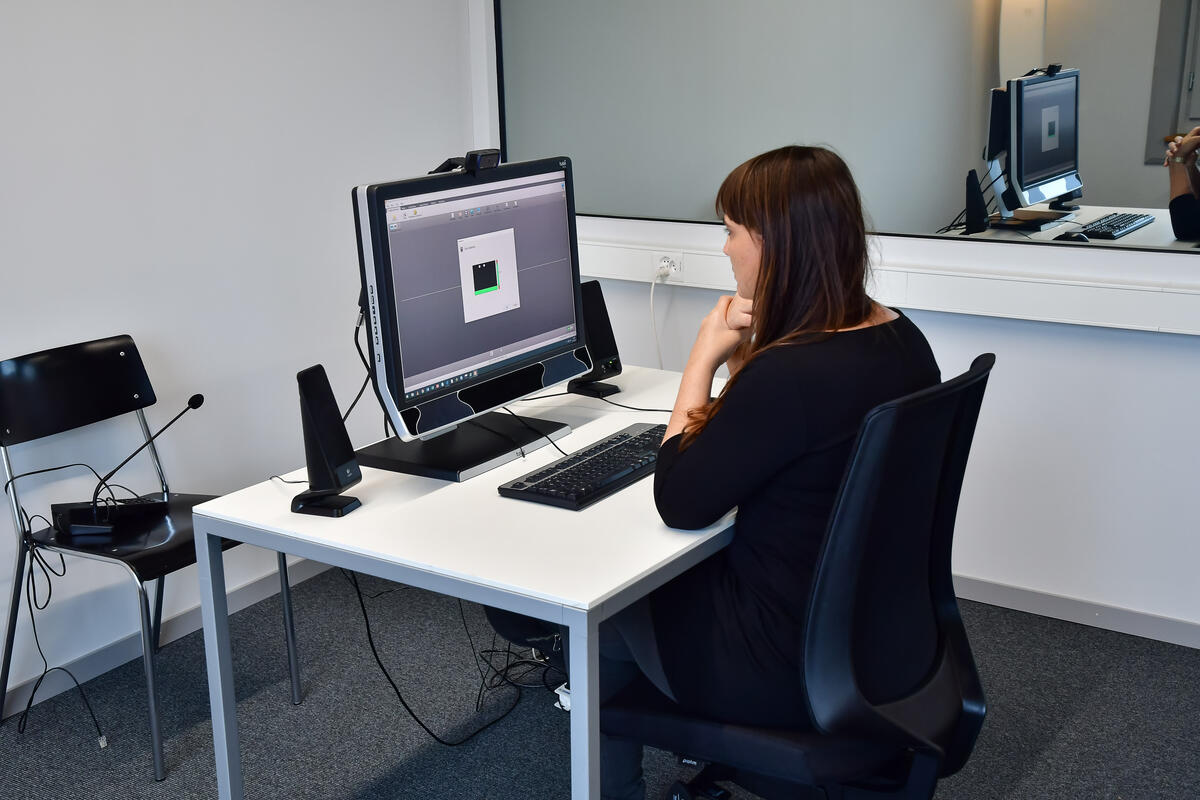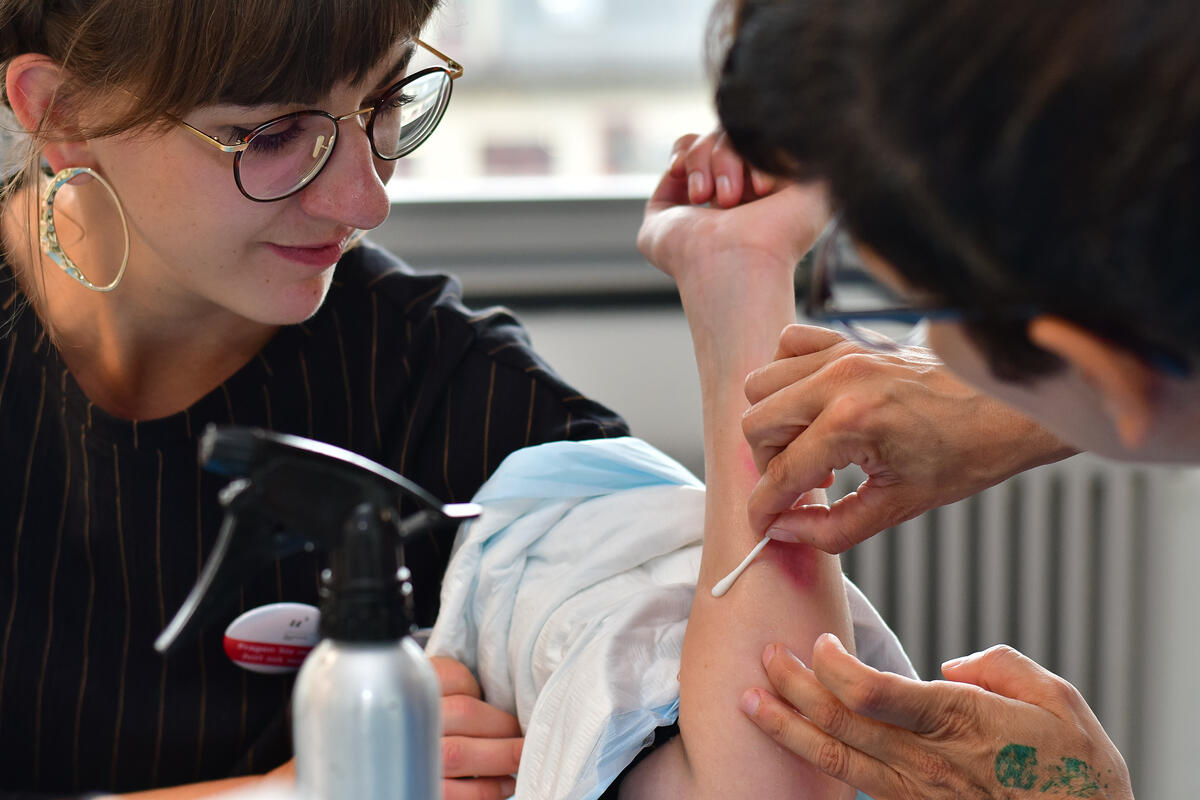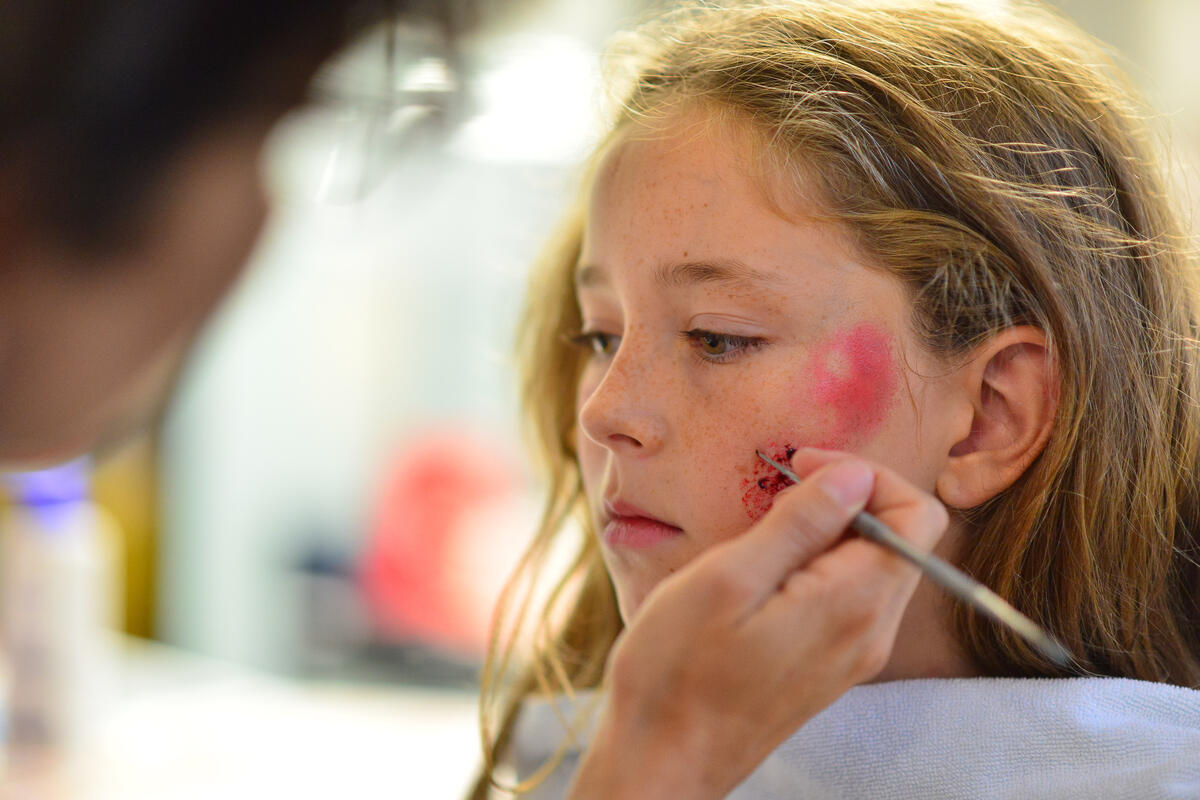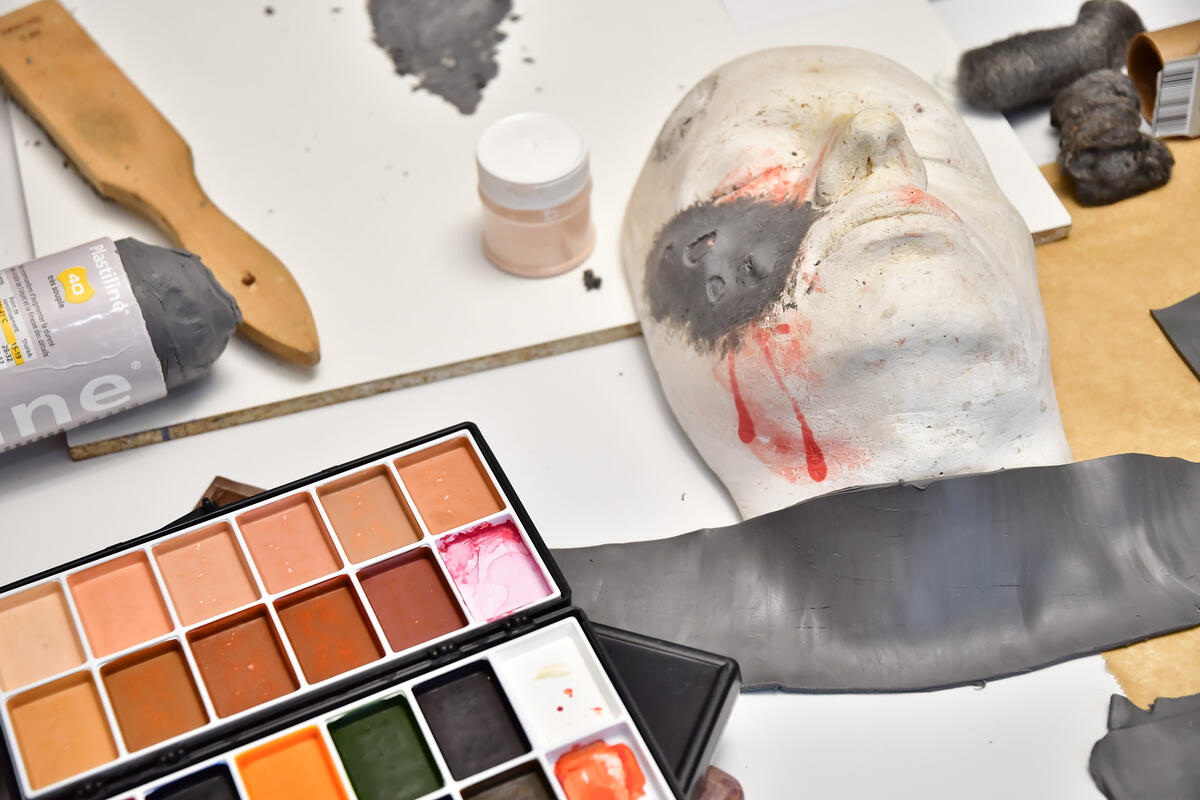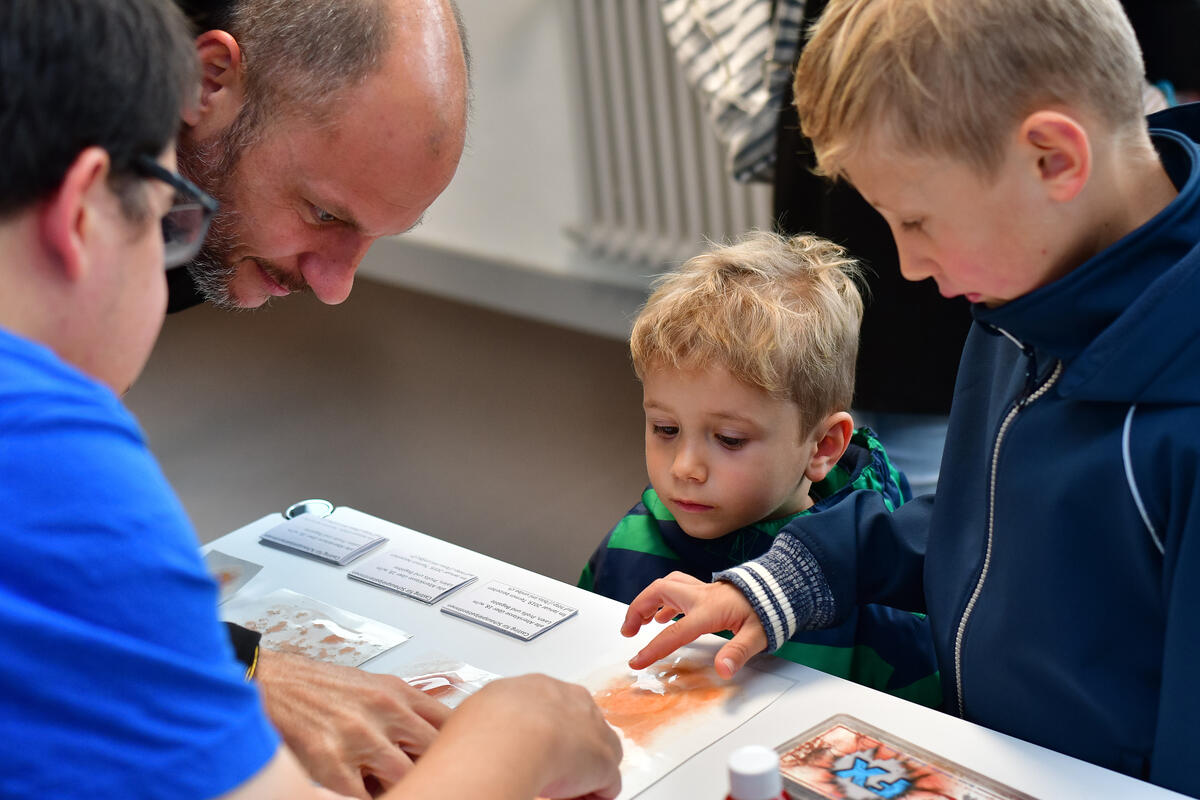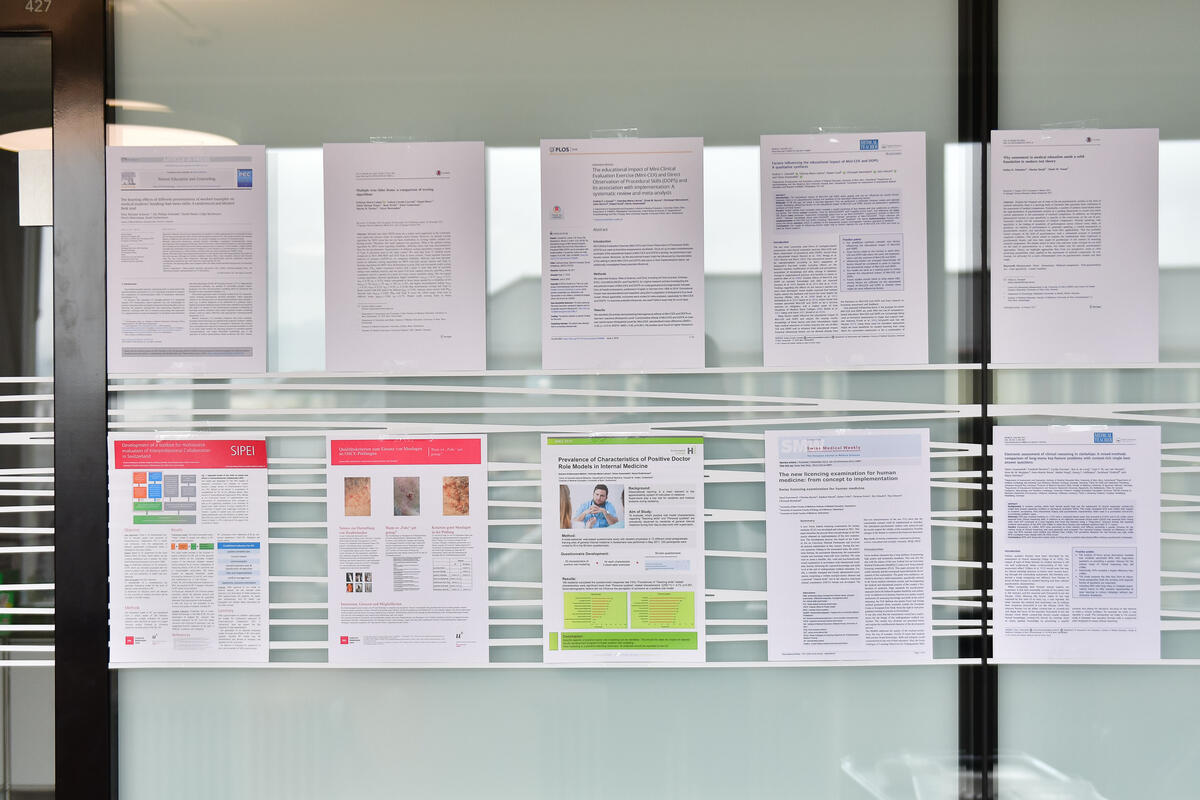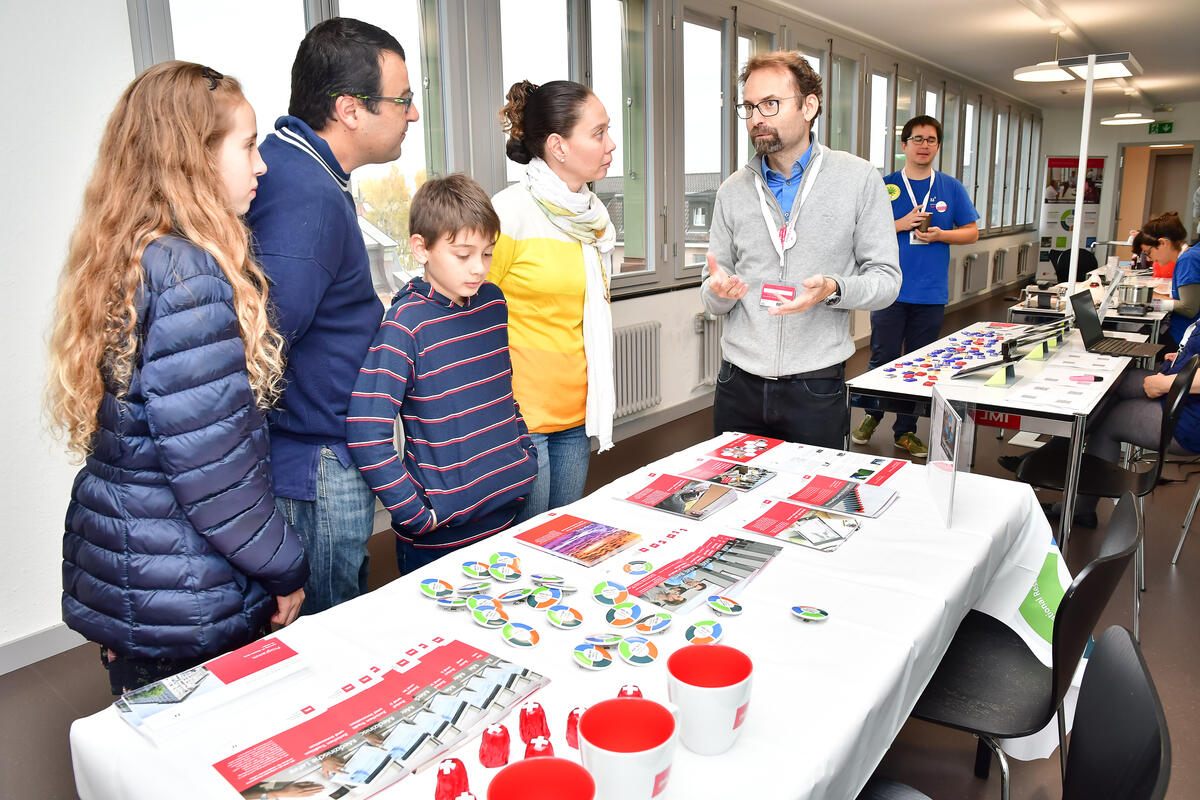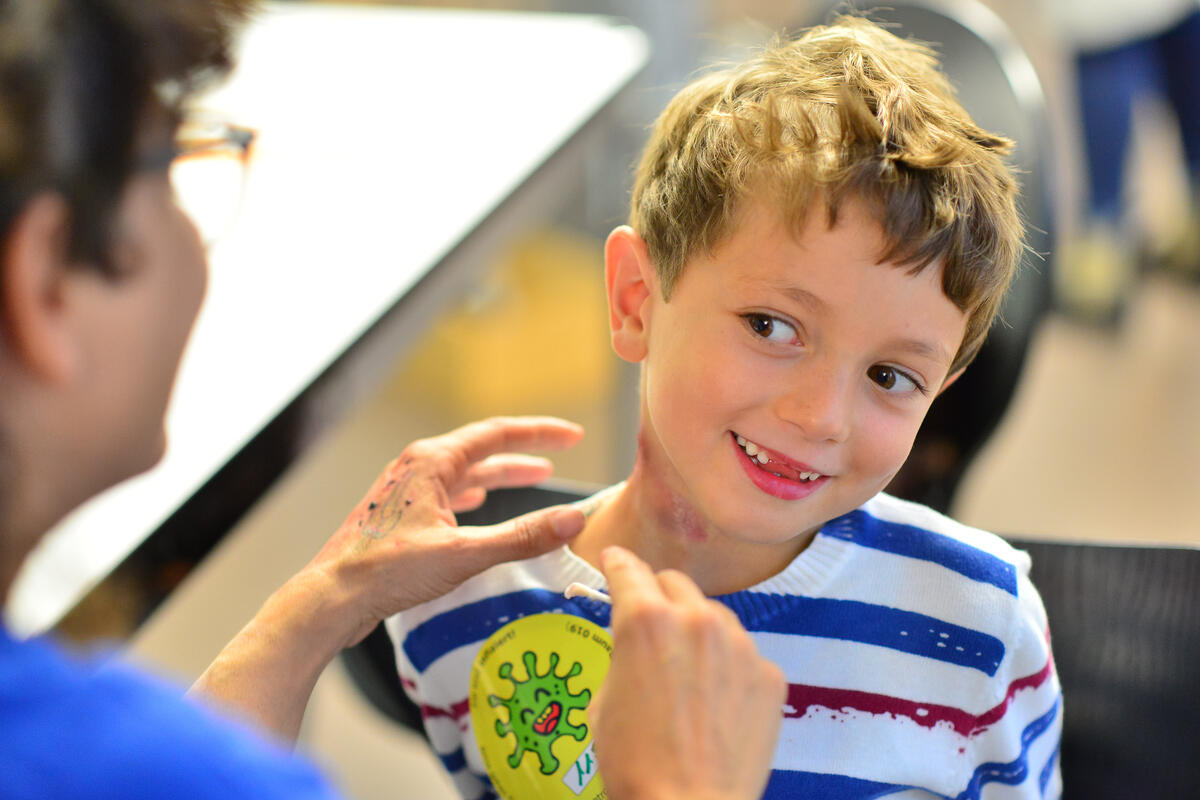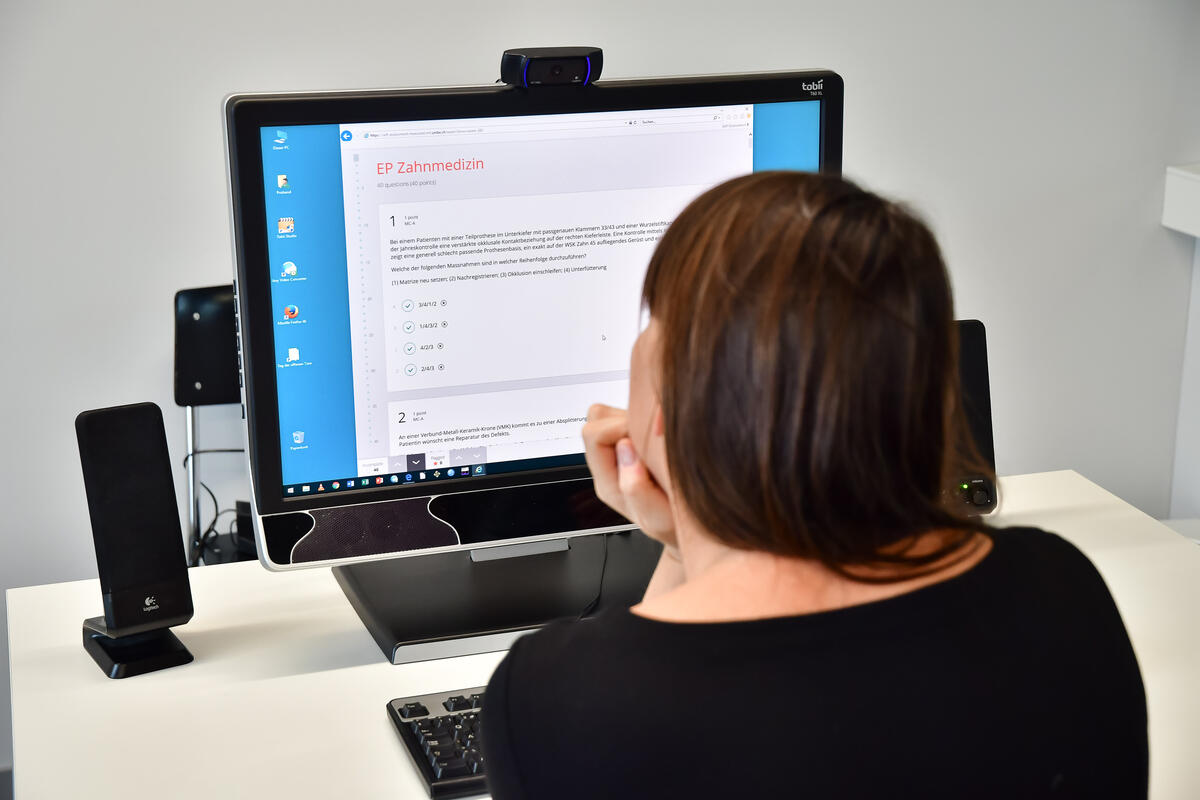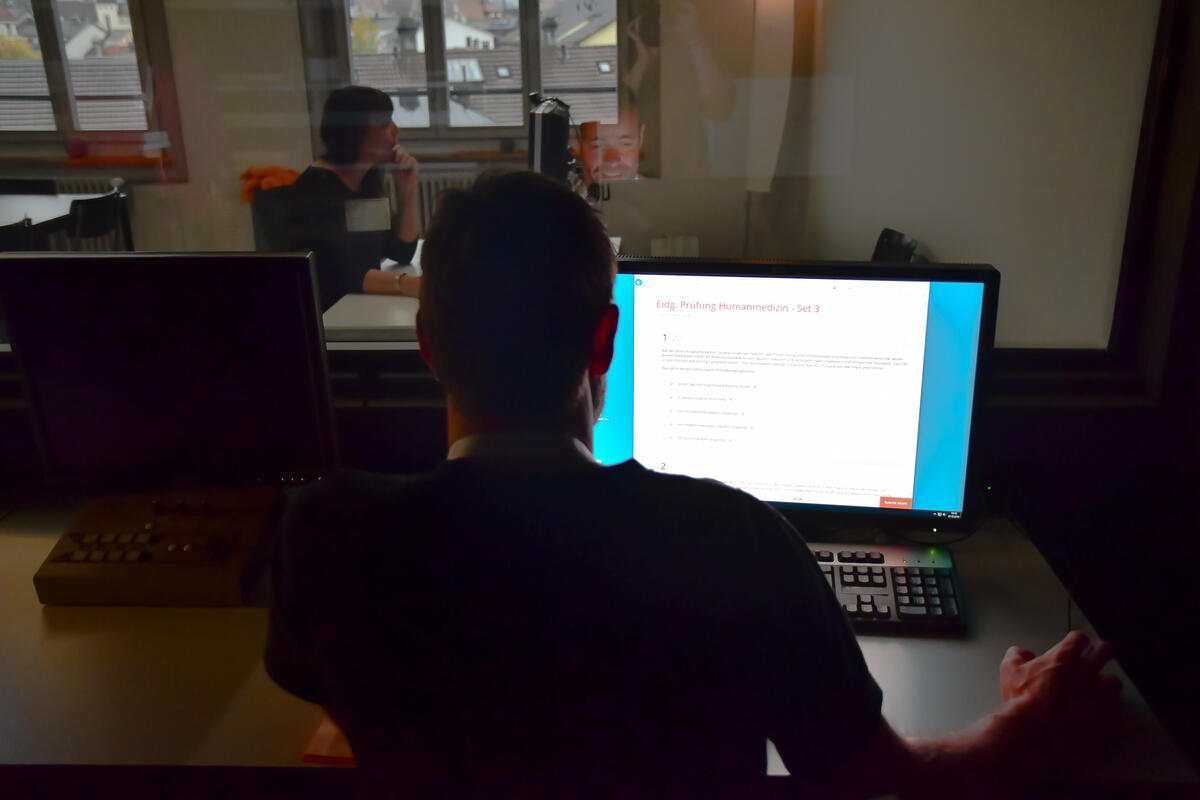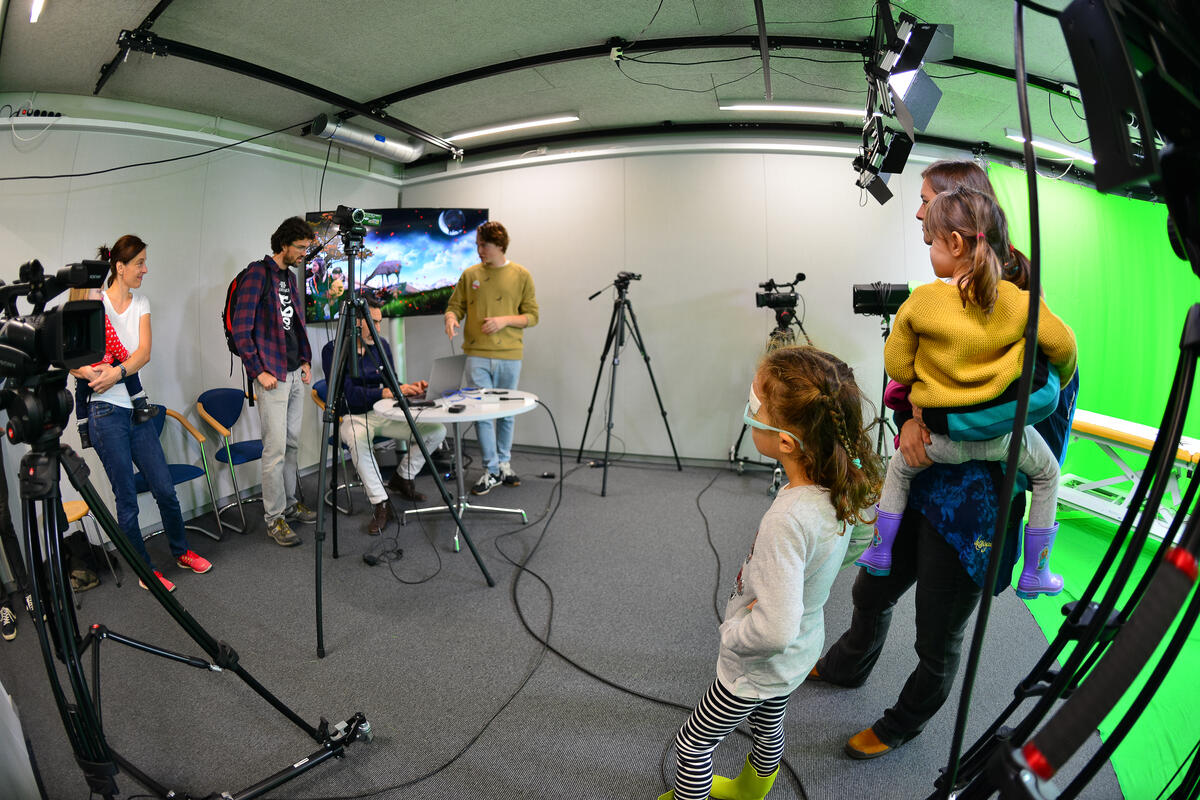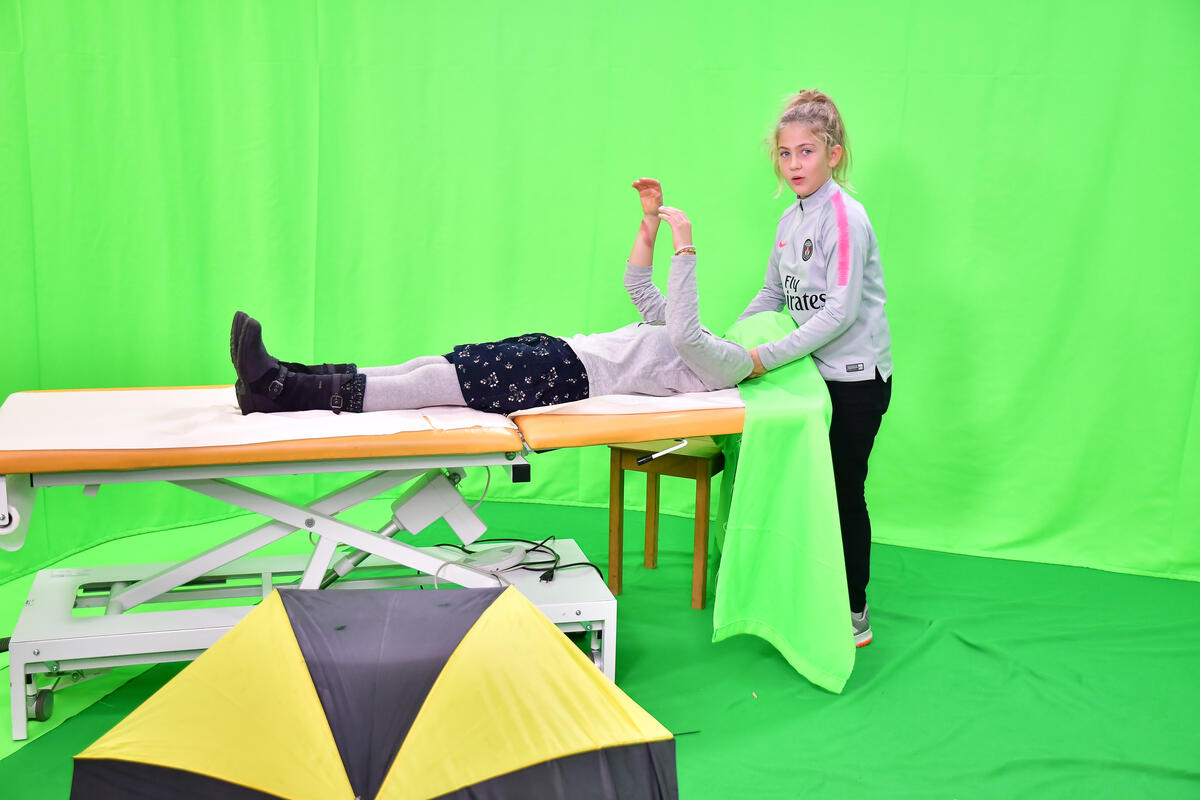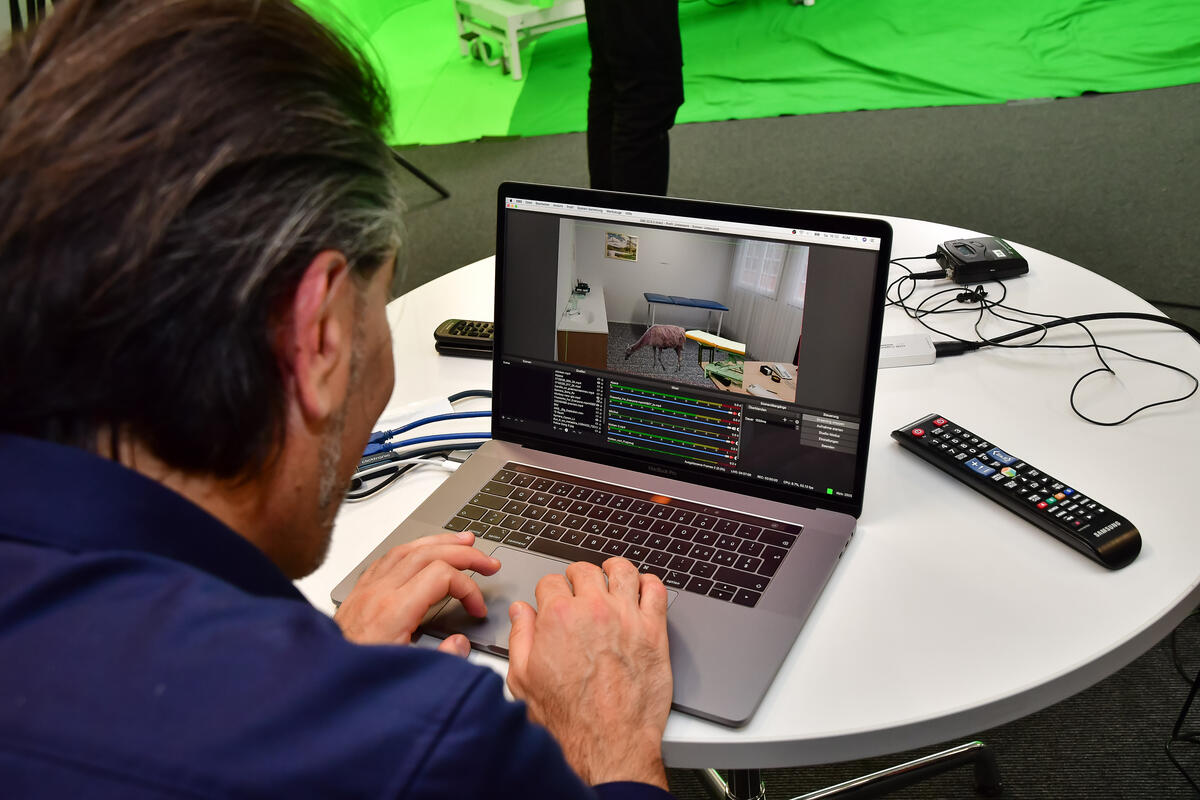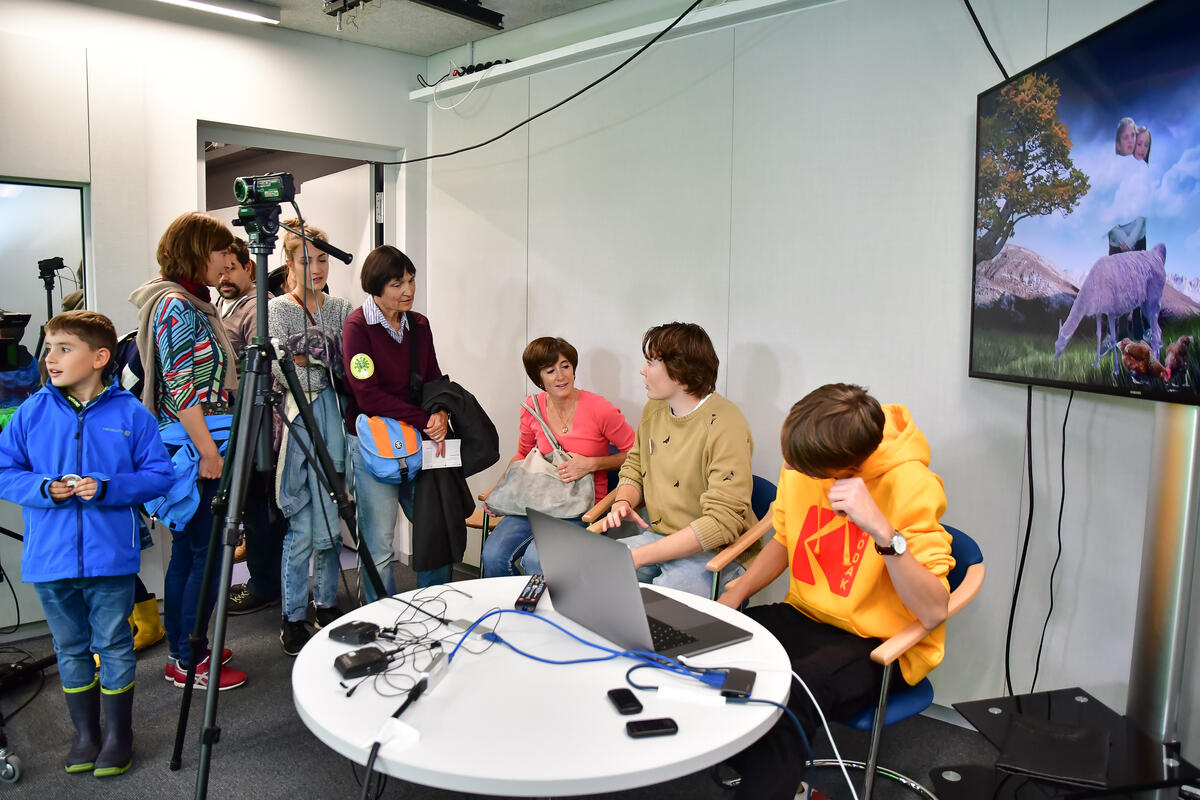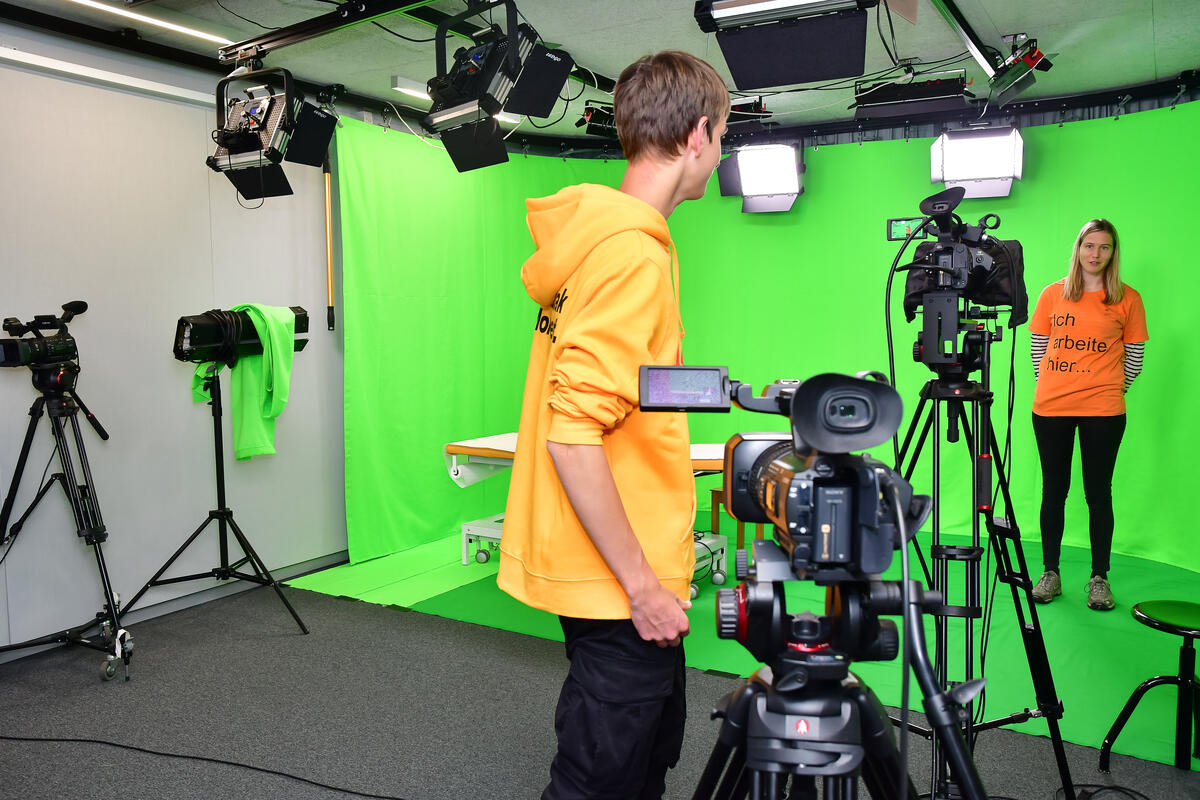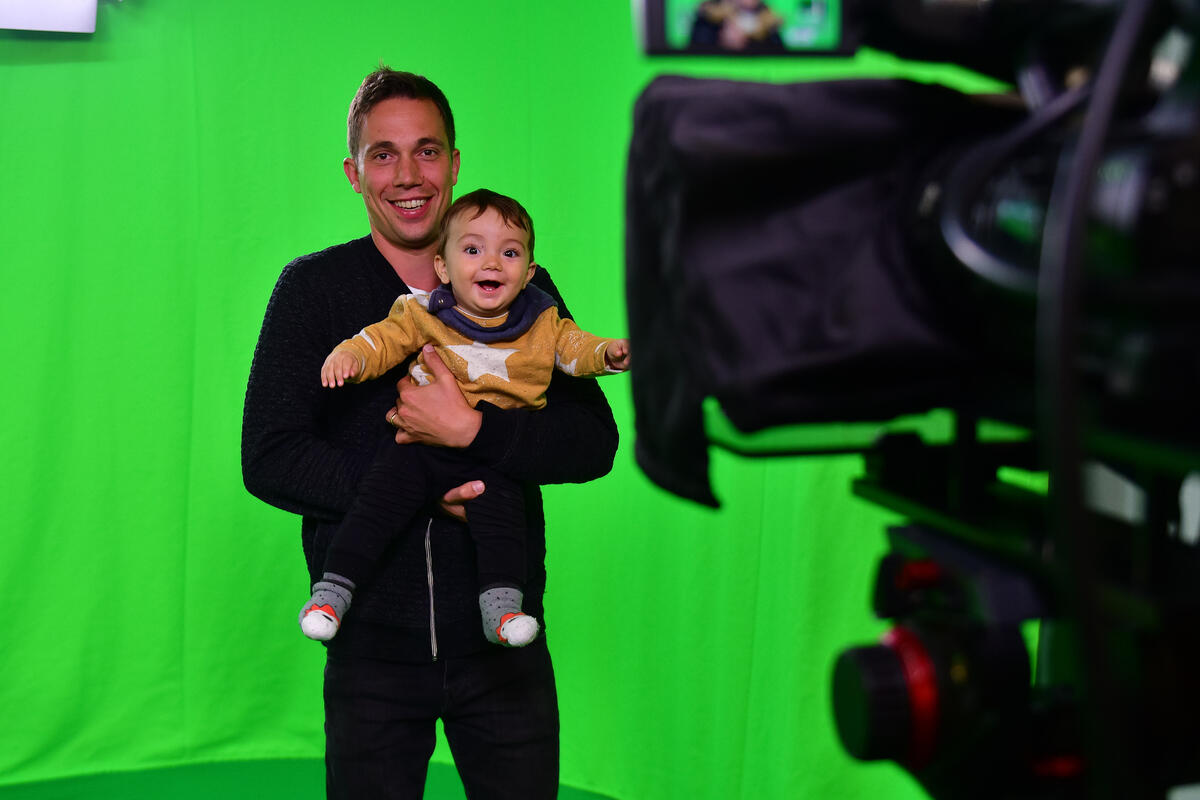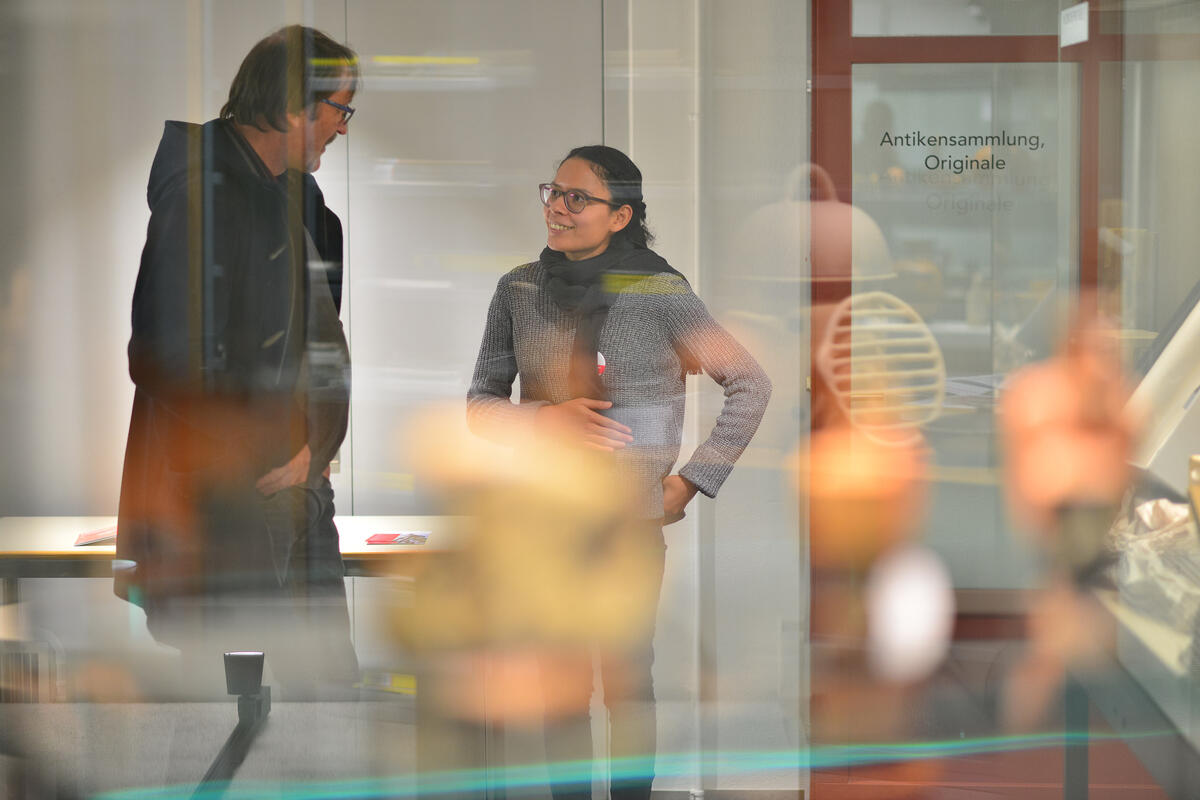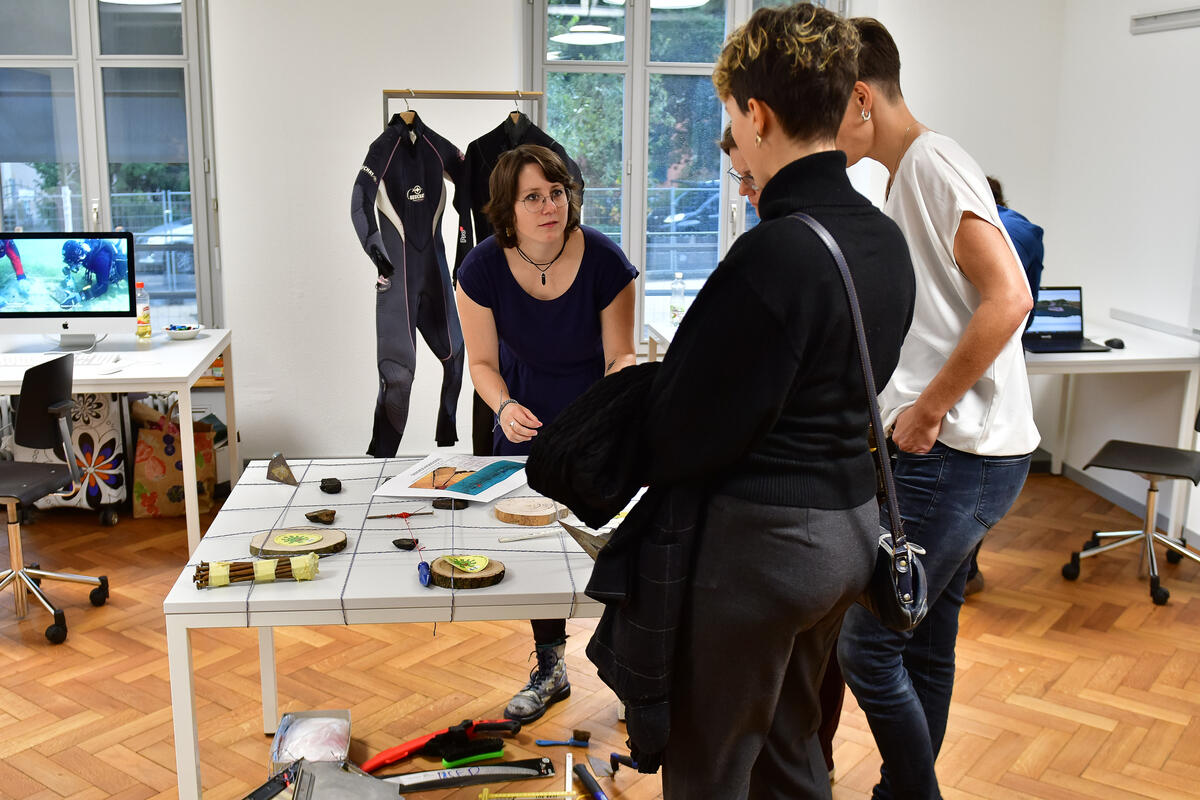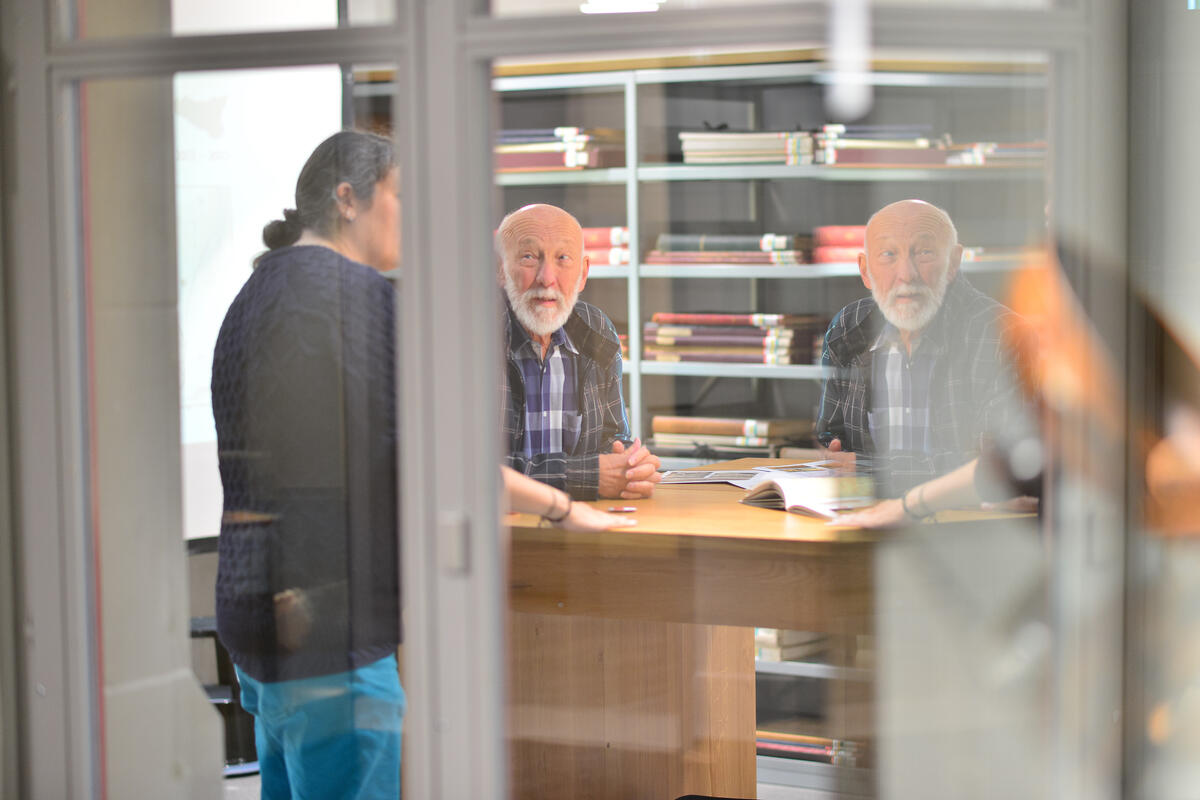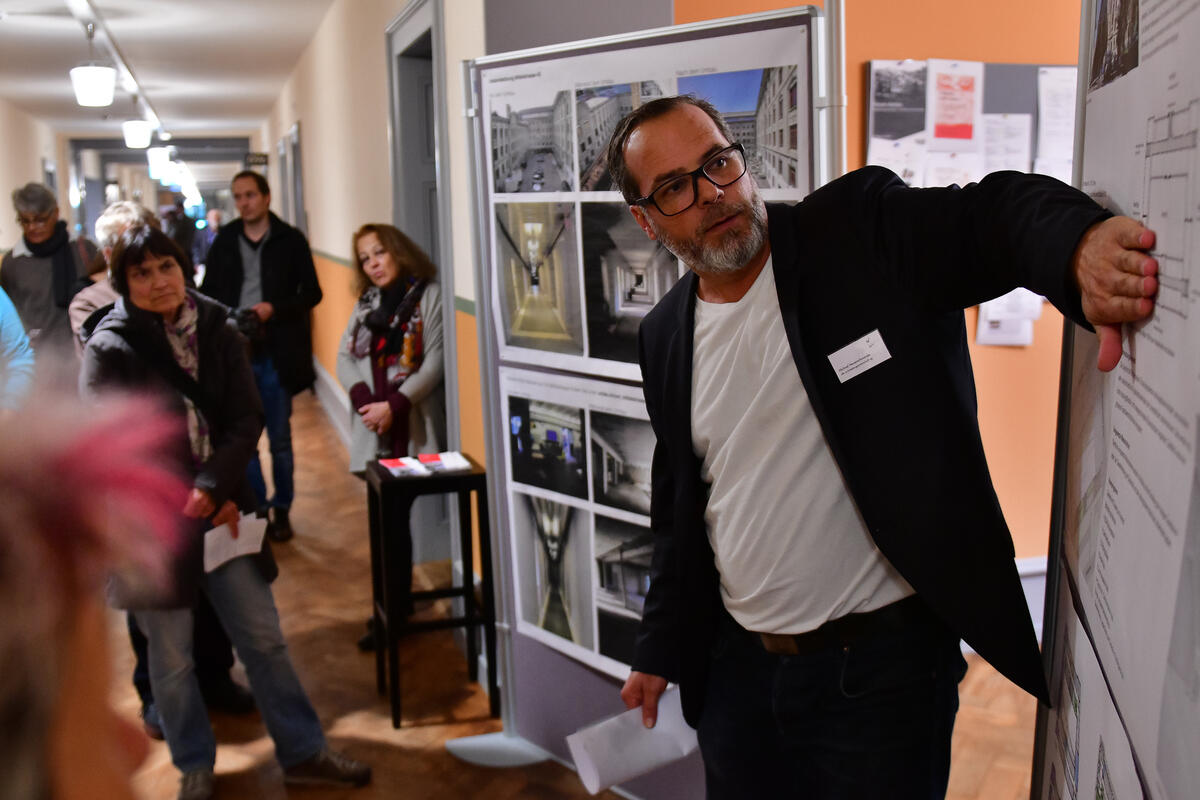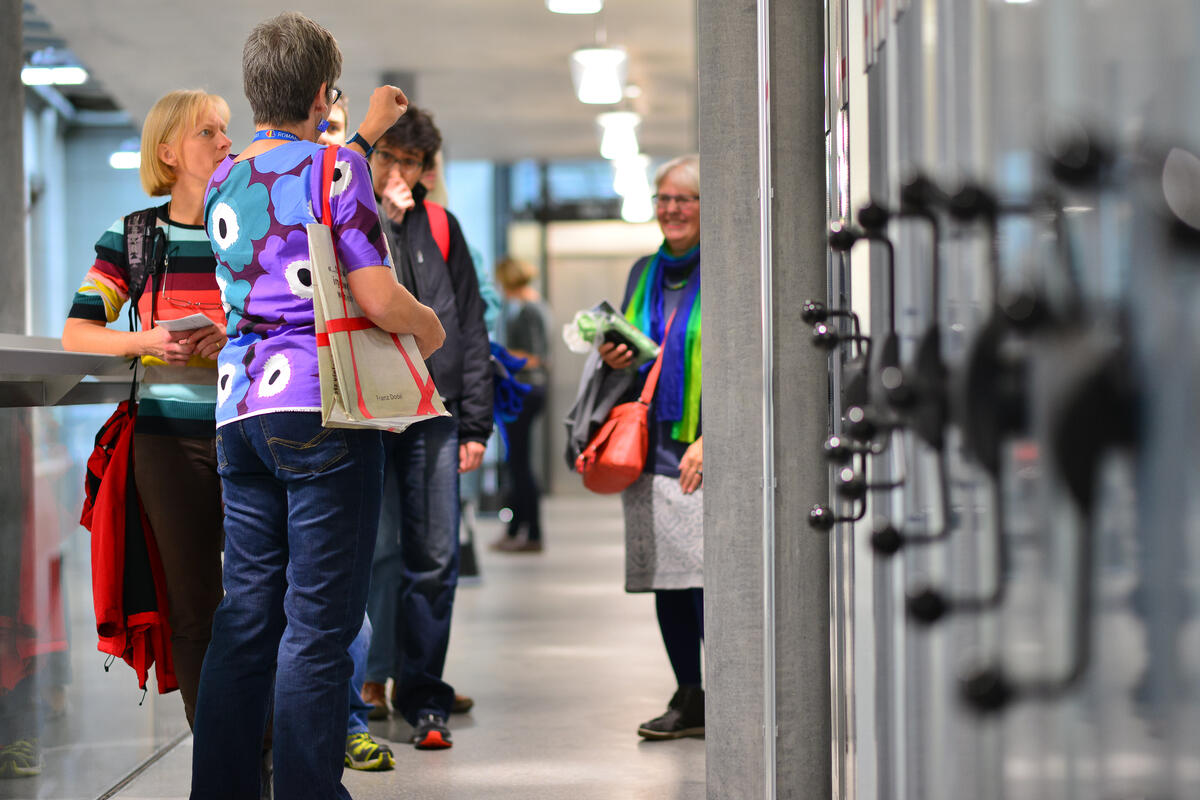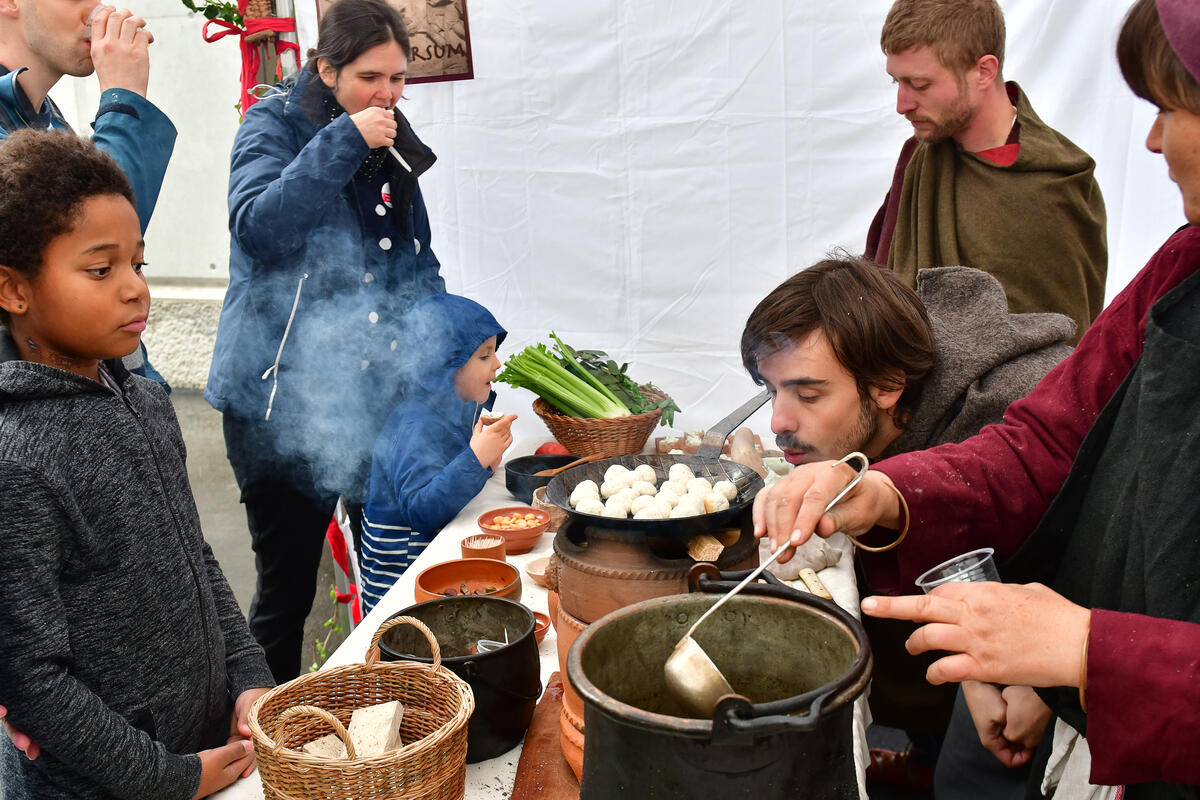Visitors were able to immerse themselves in the world of medical education and learn more about modern medical teaching and examination methods. They completed a learning circuit in which they got to experience contemporary learning and examination methods: electronic examinations with tablets or the simulation of an injury with moulage (artificial wounds). The latter was particularly popular with the children «That was totally cool and looks like it’s real», reported one young visitor enthusiastically.
Further activities on offer were the testing and observation of human-computer interactions in the research laboratory, and a tour of the new video studio with control room and video editing station.
In the research laboratory, participants solved tasks at the computer workstation under observation. While participants solved various tasks in the test area (e.g. a demo exam or a search task in the oneline shop, in the observation area, the eye movements were measured – so-called eye-tracking.
Witnessing special effects «live»
In the video studio, the visitors gained insight into video production or were able to place themselves in a virtual world thanks to the Green Screen. A “patient” lying on a stretcher in the middle of a green field surrounded by hens – not a problem thanks to this technology. The interest in medical education and the tasks of the IML was certainly considerable, which was impressively illustrated by the influx of visitors into the new premises. The IML team feels happy in our new premises and we were pleased to share a selection of our activities with the visitors.
Diverse program and fascinating insights
Finally, the event also provided visitors with the opportunity to view the historical former Swiss Federal Railways (SBB) building. For instance, special tours of the building with the themes of building history, architecture and use of the building were offered. The program of the other organizational units ranged from the preparation of delicacies from times gone by (including by former students of Archaeological Sciences), speed dating with researchers (various institutes), a pandemic control centre (Institute of Social and Preventive Medicine), a giant jigsaw of the choir vault of Berne Cathedral (Institute of Art History), a listening puzzle on the theme of gender and equality (Interdisciplinary Centre for Gender Studies) and a viewing of the new academic library (University Library), to exhibitions, films, lectures, presentations and workshops.
